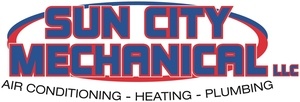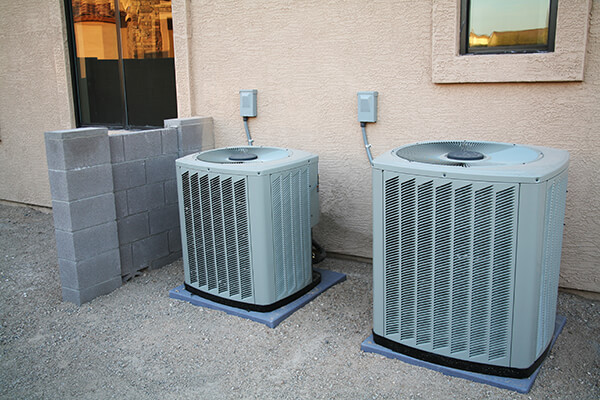Living in a desert climate like Sun City presents unique challenges in terms of heating and especially cooling your home. The extreme summer heat makes air conditioning an absolute must-have. On the other hand, the mild, fairly warm winters mean that you typically don’t need all that much heating. More and more people in Arizona are beginning to switch to heat pumps as they are one of the most efficient and cost-effective options for staying cool in the summer and keeping warm on those colder winter days. Here is everything you need to know about what heat pumps are, how they work, and why they are the perfect choice for the desert climate.
An Introduction to Heat Pumps
Heat pumps are unique in that they are one of the only HVAC units that can provide both heating and air conditioning. The only other type of unit that can also heat and cool is a ductless mini-split, which is essentially a smaller version of a heat pump that is designed for homes or rooms without existing ductwork.
Heat pumps are mounted on a concrete pad outside of the building, and they look quite similar to a central air conditioning unit. They also work exactly like an air conditioner when heating. The only real difference between the two is that heat pumps can reverse the flow of refrigerant to absorb heat from outside and use it to keep the building warm.
How Heat Pumps Cool and Heat
When set to cooling, a heat pump functions just like any other air conditioner. Both heat pumps and ACs use a special chemical compound known as a refrigerant that is extremely efficient at capturing heat energy from the air. The process starts by compressing the refrigerant, which transforms it into a liquid and instantly lowers its temperature.
The cold refrigerant flows into an evaporator coil located inside the indoor air handler unit. The HVAC blower fan draws hot air from the building into the ductwork and forces it through the evaporator coil. Since the temperature of the air is much higher than that of the refrigerant, heat energy from the air is naturally absorbed by the refrigerant. This instantly cools the air, and the blower fan then circulates the cooled air throughout the supply ducts and out of all of the vents.
As the refrigerant absorbs heat energy, it quickly becomes much hotter and turns back into a gas. This heated gas is pumped back out to the heat pump where it enters the condenser coil. This coil works in conjunction with the fan in the heat pump unit to disperse the heat back outside. Finally, the refrigerant is again compressed which releases any remaining heat and turns the refrigerant back into a cold liquid so the process can continue.
The main difference between a heat pump and an air conditioner is that heat pumps have what is known as a reversing valve. This valve functions to allow the flow of refrigerant to be reversed and run in the opposite direction so that the heat pump can also provide heating.
When heating, the process still starts by compressing the refrigerant to change it into a cold liquid. Instead of flowing directly into the house, the liquid refrigerant is pumped into the coil in the outdoor unit. When heating, the coil acts as an evaporator instead of a condenser.
Compressing the refrigerant causes it to become extremely cold, and this allows it to capture heat energy from the air outside. As long as the refrigerant is colder than the air temperature, heat energy from the air will also flow into it. Heat energy is always present in the air even when the temperature is well below freezing, but there is obviously more heat the warmer the temperature is.
This is part of the reason why heat pumps are great in warmer desert climates as they function most efficiently when the temperature is above freezing. They can still be used in colder climates, but they often can’t produce enough heat to sufficiently warm the entire building on colder days.
Absorbing heat energy from the air quickly raises the temperature of the refrigerant. The refrigerant is then pumped through an expansion valve. This expansion process transforms the refrigerant into a gas and further increases its temperature to the point where it is then hotter than the air inside the house. The hot refrigerant flows into the coil in the air handler, where cold air from inside is then forced through the coil. The heat energy then flows out of the refrigerant to raise the temperature of the air. The hot air is then blown out of the vents to heat the home.
How Heat Pumps Compare to Other Heating and Cooling Options
Heat pumps and air conditioners are basically identical in terms of how much cooling they provide and how much energy they use. A heat pump and an air conditioner that are the same size and have the same SEER rating will always consume the same amount of electricity and run for the same amount of time per hour.
The only real differences between the two are in terms of purchase price and lifespan. The fact that heat pumps are used year-round means they typically have a slightly shorter lifespan than other HVAC units, but most will still last for 10 to 12 years or more with regular maintenance.
Heat pumps are a bit more expensive than air conditioners, which makes sense since they can also be used for heating. However, the cost of a heat pump is generally far less when compared with purchasing separate air conditioning and heating units.
The thing that really makes heat pumps stand out and be such a great option in the desert is their heating efficiency. No other type of heating can even come close to competing with the energy efficiency of a heat pump. Heat pumps are still much more energy efficient than gas furnaces or other electric heating options even when the weather is below freezing, but the efficiency is highest when the outdoor air temperature is around 40 degrees or higher.
Even the most basic heat pump will typically reduce your heating costs by around 30% compared to using a furnace or any other type of electric heating. If you choose a more efficient model, you could potentially cut your heating costs by 50% or even 60%.
Another advantage of heat pumps is that they run entirely on electricity and do not produce any carbon emissions or dangerous combustion fumes like carbon monoxide. This makes them a great choice for anyone looking to lower their heating costs and also reduce their carbon footprint.
If you’re considering a heat pump for your home, Sun City Mechanical has you covered. We carry a range of highly efficient heat pumps from top brands like American Standard, Lennox, and Ruud, and our technicians can help you choose which unit is best for your home and your budget. We can also help with heat pump repairs and maintenance to ensure it continues working efficiently for years to come. Our team also installs and services air conditioners, furnaces, ductless mini-splits, and indoor air quality equipment. If you need any plumbing service in Sun City or the surrounding areas, we can help with that as well. For more information on the benefits of upgrading to a heat pump, contact us today.

